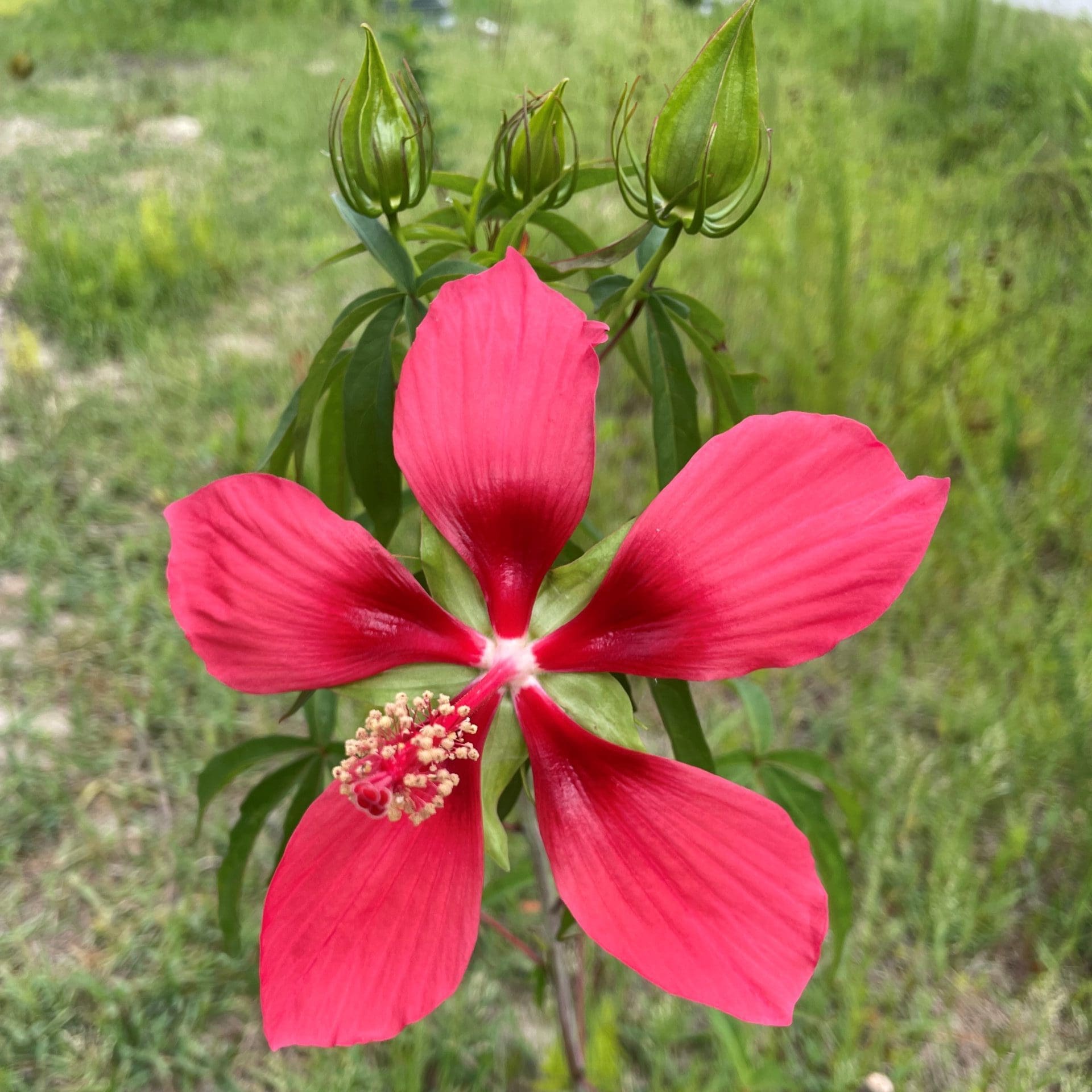Malvaceae
scarlet rose mallow
Hibiscus coccineus
Synonyms
Hibiscus semilobatus
Other Common Names
Texas hibiscus
Plant Type
Herbaceous Wildflower
Life Cycle
Perennial
Typical Size
6-8 ft. tall
1-3 ft. wide
Tolerant of
Occasional Flooding, Salt Exposure
Inolerant of
Dry Soil
Propagation
By seed
Plant Planting Notes
Due to height, plant towards the back of the garden singly or in groups.
Plants/Diseases
Occasionally, blight, canker, rust, leaf spot, aphids, scale, whiteflies, and Japanese beetles can become a problem.
Wildlife Benefits
Nectar/pollen source for pollinating insects, Nectar source for hummingbirds
Leaves
The simple, alternate leaves are deeply palmate.
Flowers
Large, horizontal flowers with five petals with an elongated staminal column and showy yellow pollen.
Fruit
The brown capsules are ovoid to globose, containing reniform-globose seeds.
Bark
The stems are glaucous.
Toxicity
No known toxicity.

USDA Hardiness Zones
6, 7, 8, 9
Light Exposure
Full Sun, Part Sun/Shade
Soil Moisture
Moist
Soil Drainage
Well-drained, Poorly Drained
Native in South Carolina?
No
Closest States Where Native
FL
Plant Native Habitat
Marshes, swamp forests, roadside swales, cultivated as an ornamental in yards, in much of our area presumably introduced from farther south, but sometimes appearing native.
Global Conservation Status (NatureServe)
Apparently Secure (G4)
Federal Conservation Status (USFWS)
Not Listed
Distribution Notes
Native to Florida; naturalized in parts of coastal South Carolina


